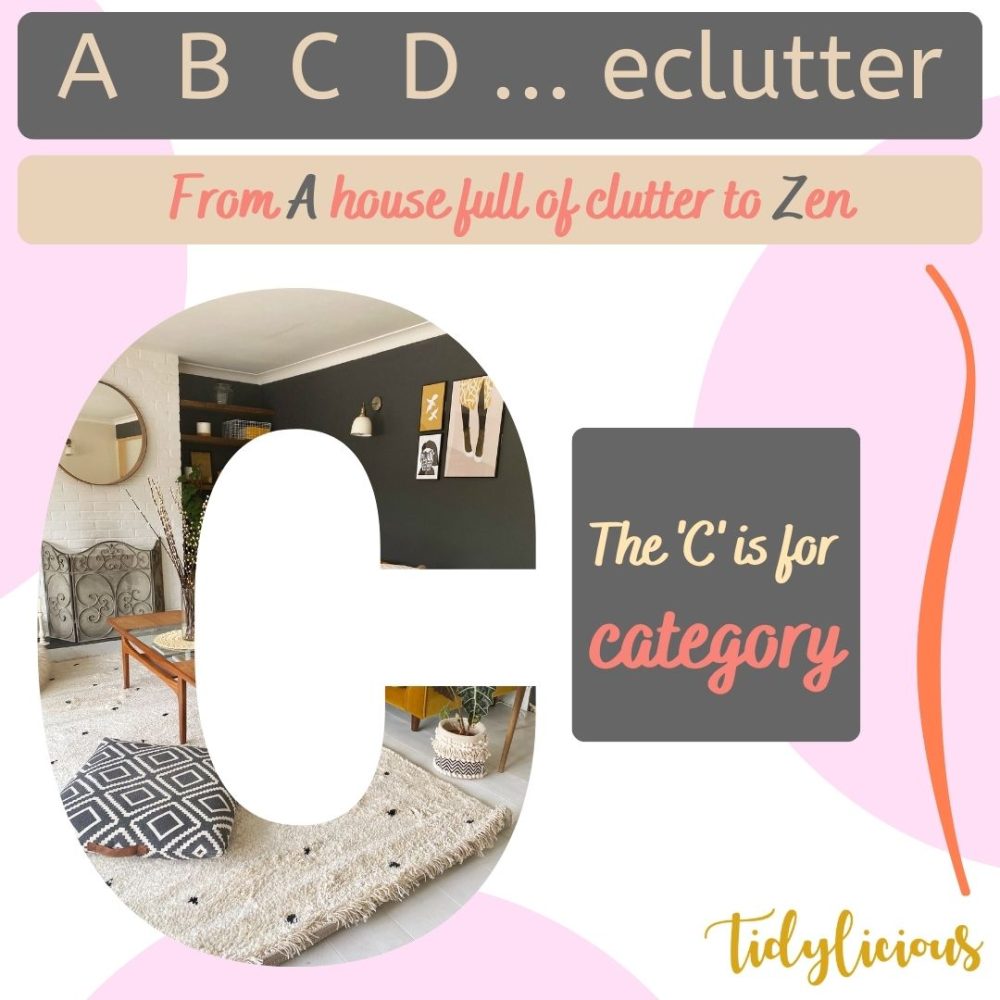From A House Full of Clutter to Zen. My declutter alphabet gives you lots of tips and advice, ranging from from A to Z, to help you declutter your home. In this blog, I share A to F with you. If you want to be the first to hear about the other letters, just sign up to my newsletter. In this blog, I’ll discuss:
A – APDO
B – Box
C – Category
D – Decisions
E – Eliminate
F – Focus

A is for APDO
APDO is the Association of Professional Organisers and Declutterers in the UK. How does it benefit you that I’m a member of APDO?
Booking in an APDO member to help you declutter and organise your home, means that you can expect a high professional standard, because all APDO members are required to adhere to the APDO Code of Ethics which highlights good practice towards our clients.
Also, with more than 500 members we share a lot of experience and knowledge between us. If you have a particular item you want to sell, or discard in the best way possible, but I don’t know how/where, then there’s bound to be a colleague organiser who knows the answer. So when you book me, you’ll also have access to this huge pool of knowledge.

B is for Box
I advise against buying any storage solutions before you start decluttering. It can be so tempting to go out and buy some nice boxes or containers. BUT you will only know what kind of storage you EXACTLY need once you’ve decided for ALL your stuff whether it’s staying or going.
What I do advise, is to put aside any boxes (and other containers) that you come across in your own home, because these might just be the storage solutions that you need. Shoe boxes are usually great, because of their size and sturdiness. I use shoe boxes in my and my kids’ wardrobes for tops, jeans, leggings and pyjamas. You know the boxes that mobile telephones and tablets come in? Great for smaller items, such as sunglasses, stationery, socks, and batteries.
Storing items in a box, rather than loose on a shelf or in a drawer, will make it easier to keep things organised. And it looks neater. If you put several categories of items in one space, without any dividers, it usually starts to look messy really soon. And the thing with mess is that it attracts more mess. Once a drawer looks messy, you’re more likely to just add random items to it, making it very disorganised. So my tip is to use boxes and other containers as dividers.

C is for Category
The word “CATEGORY” has got to be part of the Declutter Alphabet, because I think it’s the word I use most often when I talk about how to declutter and organise.
When you declutter by category, it will make the whole thing less overwhelming. And when you organise your home by category, you’re less likely to revert back to clutter.
Decluttering can be overwhelming. You might not know where to start. Or when you have made a start, you might not know where to continue. At times, you might wonder whether you’ll ever be finished. When you tackle your home category by category, and stick to a specific order, it takes a lot of this overwhelm away. It’s all about taking a methodical approach.
Now a few words about organising by category. Once you’ve decided what to keep/discard, give all the items you’re keeping a home and keep items within a category together in one place, rather than spreading them over several locations. Also, do not mix categories. So keep all your sunglasses together in one place, and do not put other items in the same storage containers as your sunglassess. So no batteries mixed up with your sunglasses! This makes it much easier to find items, and put items back after use. Which makes it so much easier to maintain a clutter-free home.

D is for Decisions
When decluttering, you’ll be making MANY decisions. Decisions about whether to keep or discard. Some decisions are easy. You just know that you don’t want/need something anymore. Other decisions are much harder. That jumper that cost quite a bit of money but you’ve hardly worn it. Or that gift from a friend. You like the friend, but not the gift……
Some tips and tricks for if you find the decision-making difficult:
- Start with items that you’re not too attached too. Perhaps you love your dresses, but don’t have any particular feelings about your socks. Then start with your socks.
- Instead of looking at which items to discard, focus on the items you want to keep. Put the ‘keepers’ to one side, and you’ll start to notice which items can go.
- Put all items from one category together. Let’s take books as an example. Choose your five favourite books that you definitely want to keep. Hold them, one by one, and notice what you’re feeling. Then start going through the rest of your books, one by one. Hold them, and only keep the ones that give you the same feeling of joy/excitement that your favourite 5 gave you.
- Keep going. The more you’ll do it, the better you’ll get at it.

E is for Eliminate
This might almost seem too obvious. Of course is eliminating stuff from your house a big part of home decluttering. But, decluttering your home is not just about eliminating ITEMS. It’s also, and perhaps even more so, about eliminating GUILT. Do you feel guilty about wanting to let go, because:
- The item was quite expensive?
- The item was a gift?
- You’ve hardly used the item?
- You don’t like adding to landfill?
In order to let go, drop the guilt.
If you hold onto these types of items, you are holding onto your guilt. Does that make you happy? Probably not, right? Try and find peace within yourself about letting go of these items. You’ll most likely find that once the item is gone, the guilt is gone as well. Can you imagine how much lighter you’ll feel without that guilt weighing you down?
When it comes to feeling guilty about adding to landfill, remember there are many sustainable ways to get rid of items, and I’m happy to advise you on this.

F is for Focus
It can be hard to stay focused when decluttering your home. Here are a few ways in which you might get distracted:
- The items you’re dealing with can distract you (ever started reading a book or magazine whilst decluttering?)
- When you’re taking an item to another room as that’s where it belongs, you might start tidying in that other room
- You might notice that the window sill needs dusting, and before you know it, you’re in full on cleaning mode.
Three ways to help you to maintain your focus:
- Set a timer to go off every 25 minutes or so. Everytime the timer goes off, check whether you’re still doing what you set out to do.
- Set yourself a very specific and bite-size project. Don’t aim to declutter the whole wardrobe in one go, but break it down in tiny steps: sock drawer, bras, jeans, skirts, smart tops, casual tops, etc.
- Declutter or organise with a friend or family. Or with me 🙂 If you get distracted, the other person can help you to bring back your focus. If you book a session with me, you’ll be sure to get a minimum of three hours of decluttering and organising done. Because that’s why I come to your home.
G is for ……….
If you’d like to find out what the G stands for in my Declutter Alphabet, please sign up to my mailing list, and I will you drop you a message when my next instalment of the Declutter Alphabet is ready.



